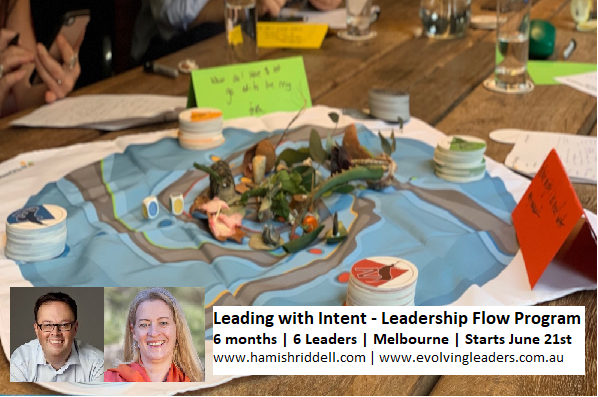This post explores a holistic approach taken in my coaching of a senior leader. Our aim was to help get her out of her head and into her body, accessing and stepping into more of who she was at her core. This would provide the power, confidence and presence to deliver a significant career milestone presentation. It offers the reader resources and an approach to inspire a sharpening of your own presentation skills.
I recently worked with an executive in the latter part of her career. She was naturally introverted and had little experience in formal presentations. However, she had been charged with the responsibility of delivering a significant presentation to an internal audience, part of the launch of an exciting new chapter in the business. She felt little connection to the topic and, to make the situation a little more challenging, the parent company had provided the presentation they wanted delivered. Worse still, the presentation had been translated (poorly) from another language.
The situation triggered a fear reaction in the leader driven by a low level of belief in herself. This was exacerbated by it being a new experience and the fact that, being introverted, she quite naturally felt very visible and exposed. On the plus side the leader did something that many shy away from – she recognised that she needed help and she took personal responsibility to hire a coach to help. These are the leaders I love to support.
“While many of us might fear public speaking even just at a work morning tea, stepping up to the job can make or break your career, especially for those at the top”
Dr Lucinda Holdforth on the ABC Radio National program This Working Life.
I have done my share of presenting over the years, but to be completely transparent I had never formally coached someone else in presentation skills. So, it was time to get to work!
I reflected on the number of presentations that I had sat through feeling totally bored, with speakers who were disconnected from their message and themselves. I knew that to effectively deliver a presentation requires the development of some specific communication and presentation skills such as tone, timbre, presence and connecting with audience. I also knew that to focus on skill and capability alone was not going to deliver results.
I came across a great resource that also informed my approach:
Top Five Tips for Presenting with Impact by Dr Barry O’Sullivan
So, with an eager student at the helm, I designed a coaching program based on what I had read and what I know best: starting close in – helping this leader to deepen /reconnect with who she was and what mattered to her:
Step 1: Start close in
In this context this meant helping the leader to connect to who she is and what matters to her to enable a connection between message and person. Prior to the first coaching session this leader completed a Personal Values Assessment and Core Motivation exercise (“I go to work each day at … so that I can…”) connecting her with her deeper inner motivation: what makes her get out of bed each day to come to work. She also did some reflection around these key questions:
- What is important personally in your life?
- How do you want to ‘show up’ as a leader?
- What patterns of thinking and beliefs are getting in the way of this?
- What needs to shift so that you can feel empowered and confident as a speaker?
Step 2: Understand your audience
Often inexperienced presenters become so consumed with navigating their own fear about the presentation that they lose sight of why they are doing the presentation and who they are doing it for.
This requires a deliberate mindset shift that can feel a bit disorienting, but at the same time it can be screamingly obvious as it was for this client:
- What if it (the presentation) is not about you?
- Consider:
- How can you be of service to this audience?
- How do you want the audience to feel?
- What does the audience need from you?
- What do you need to do/what needs to change for you to get out of the way of yourself?
Step 3: Change your body, change your mind
Of great relevance for this client was the work of social psychologist Amy Cuddy on body language. Given the client was quiet by nature and didn’t easily or naturally command attention and respect when she walked into a room, and nor did she feel confident and empowered when she stood before a group, we focussed on this wisdom from Amy Cuddy:
Our bodies change our minds
Our minds change our behaviour
Our behaviour changes our outcomes
Body language affects how others see us, but it may also change how we see ourselves. Amy Cuddy argues that ‘power posing’ – standing in a posture of confidence, even when we don’t feel confident – can boost feelings of confidence and might have an impact on our chances for success.
Here is what Cuddy says:
- When you pretend to be powerful, you are more likely to actually feel powerful
- Power posing or high power poses versus low power poses – are you collapsing or taking up space?
- Do you feel like you are supposed to be here (‘imposter syndrome’)?
- You can choose to be assertive, confident and powerful
- Configure your brain to cope the best in that situation
Source: Your body language shapes who you are, Amy Cuddy
Well can I just say – in case you had any doubts – that it really works.
When you pretend to be powerful, you are more likely to actually feel powerful.
Why don’t you try it on?
It was through this inspiration, and practice that my client shifted from being closed down and reserved to having an open heart, feet on the ground, back tall and the presence that demanded attention and an excited anticipation from the audience about what she was about to say.
Step 4: Communication and presentation skills development
In terms of building the presentation skill development component of my program, I drew upon the following great ideas from Julian Treasure:
How to speak so people want to listen, Julian Treasure
There are three main parts to Julian’s work that all informed the coaching approach:
- “Amazing
Toolbox”
- Register – head, throat, chest voice – “we associate depth with power”
- Timbre – rich warm smooth
- Prosody – avoid monotony
- Silence – find opportunities to rest in silence
- Pitch – vary the pitch
- Volume – vary the volume
- HAIL – honesty/authenticity/integrity/love
- Vocal warm ups.
(You can access this content via the TED talks link above)
Step 5: Mindfulness to quieten the ‘monkey mind’
When the stakes are high and we are well out of our comfort zone there seems to be this natural increase in mental chatter – like the radio gets turned up to 10! This was the case for this leader and so through the four-week program and on the morning of the presentation, she used a meditation practice to quieten down this mental chatter.
Step 6: Practice, practice, practice
Nothing great is ever achieved without practice. This client was completely motivated and disciplined and these were key ingredients to her ultimate success. During the month-long preparation, the leader videoed herself presenting on a weekly basis, watching it back and reflecting on what had improved and areas for next focus. From my perspective, one of the big things I needed to do was to help her ‘take the jump’ from speaker notes on PowerPoint to cards to that final leap of faith that she didn’t need any prompts to finally getting out there and doing a great job.
The big day finally arrived. The message I received immediately after the presentation said: “I nailed it”. Job done. This leader was a true inspiration and a joy to coach.
It is a well-known phenomenon that we teach what we need to learn. After initially hesitating to accept this assignment, I am grateful that I said yes because as it turns out the coaching and support that I was able to give this leader was just what was needed, and ironically, as I step more into presenting and speaking myself, it was also perhaps the perfect medicine for me.
Interested in presenting with greater impact? I would love to help.

A unique development opportunity. 6 months | 6 Leaders | Melbourne | Starts June 21st 2019
Do you feel like you are out of flow?
Do you sense there is a better version of your leadership just out of reach?
Are you wrestling with questions that don’t have easy answers?
Are you caught in the whirlwind of doing (not being)?
Would you benefit from a having some external support to navigate long over-due changes?
Do you need a regular space to spend time working on being a better version of you?
If this is you then ”Leading with Intent” is for you. The focus of Leading with Intent is on taking your story – your ‘you’ – to the heart of your leadership.
We invite you to join this different and powerful development experience. This exclusive program has been designed for six like- minded leaders and includes:
– five half day development sessions over six months utilising The Flow Game
– two individual development sessions (prior to program start and at the conclusion)
– your own peer support learning group; and
-ongoing guidance from your flow game hosts during the program .
Full program details


